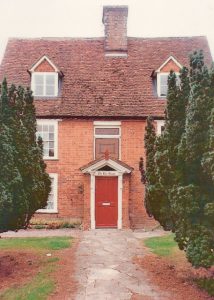Welcome To The Houghton Regis Heritage Society Website
About Our Society
The Houghton Regis Heritage Society was formed in 2012 by individuals who are passionate about the heritage of Houghton Regis
and want to preserve where possible and record it for the benefit of the local community and for future generations.
In 2017, the Society became a Charitable Incorporated Organisation, Registered in England (Charity No 1174720).
Follow and Like us on Facebook
The Objectives of the Houghton Regis Heritage Society
To advance the education of the public in the history and heritage of the town of Houghton Regis, in particular but not exclusively through the collection, preservation and making available to the public of material and artefacts of historic significance by the establishment and maintenance of an archive and collection for the preservation of such material and artefacts and by the production of literature, films and recordings.
Latest News
Read about our latest news
Events Update
The Red House More Information
Bedfordshire Archives Newsletter Autumn 2023
Archaeological Finds in Houghton Regis
Auction Catalogue Houghton Hall 1913
History of Houghton Regis Time Line 3500BC to Present
The History Of Houghton Regis
Houghton Regis has a long history dating back to Saxon and earlier times.
To the West of Houghton Regis lies the Maidenbower.
Extract from Historic England: “Maiden Bower is situated on a broad plateau below the Dunstable Downs which overlooks the northern edge of the Chiltern scarp. The monument includes a large univallate hillfort of Iron Age date, although surface finds, small scale excavation and recent geophysical surveys have also demonstrated the existence of a Neolithic causewayed enclosure in this location, and provided evidence of Romano-British activity within the ramparts. The hillfort is principally defined by a single circuit of bank averaging c.225m in diameter and enclosing a level area of some 4.9ha. The bank survives up to 3m in height within a hedgerow belt.”
Houghton Regis is recorded in the Domesday Book compiled by William 1 in 1086.
Houstone, taken from the Saxon “Hoe”- the spur of a hill- and “tun” a farm, was a settlement in Domesday Book, in the hundred of Manshead and the County of Bedfordshire. A great part of what is now Dunstable was included in the Manor of Houghton Regis. Later, the northern part of Dunstable was known as “Upper Houghton Regis” and included two railway stations.
It had a recorded population of 50 households in 1086, putting it in the largest 20% of settlements recorded in Domesday.
Land of King William
Households: 38 villagers. 12 smallholders.
Land and resources
Ploughland: 24.5 ploughlands. 2 lord’s plough teams. 22 men’s plough teams.
Other resources: Meadow 12 ploughs. Woodland 100 pigs. 1 church. 0.5 church lands.
Valuation Annual value to lord: 10 pounds 11 shillings and 12 pence in 1086.
Owners
Tenant-in-chief in 1086: King William. Lords in 1086: King William; William the chamberlain. Lord in 1066: King Edward.
In 1131, Henry 1st gave land in the South of the Manor of Houghton Regis to found the Dunstable Priory
Extract from The History of Bedfordshire (early 1900)
 Houstone, Houghton
Houstone, Houghton
The Parish of Houghton Regis, to the north of Dunstable, contains about 4,390 acres, of which some 3,162 are arable land and 843 permanent grass. The soil is loam and chalk, and the subsoil chalk with cllay in parts. The principle crops are wheat, barley, beans and peas.
Houghton, owing to the fact of it being Crown Property, early became known as ‘saelig Houghton or ‘fortunate Houghton,’ and later as Houghton Regis or Kings Houghton, to distinguish it from the parish of Houghton Conquest in Redbornstoke Hundred. At the time of the Domesday Survey a great part of what is now Dunstable was included in Houghton parish. At the present day the northern part of Dunstable extends into Houghton parish and is known as Upper Houghton Regis, and includes the two railway stations, as well as a Wesleyan chapel off the Watling Street and a mission church in Union Street served from Dunstable parish Church.
The village of Houghton Regis is in the main uninteresting, though a few old timbered cottages and barns are still standing among the modern red brick houses. At the east end there is a large village green, on the southside of which is Houghton Hall, the seat of the Brandreth family since the 17th century. it is a low red brick building and a fine example of late 17th century architecture, standing in extensive and beautiful ground. The staircase hall is a good specimen of the type of work prevalent at that period. The principle rooms are are wainscoted. Some tapestry panels are still in situ. The joinery throughout is in excellent preservation. The exterior has been robbed of its original appearance by alterations made about 50yr’s ago. On the north side of the green is the site of the old manor-house, where there is a stone dovecote in a ruinous condition, about 26ft by 17ft outside measurement, standing about 15ft high.
The church, with vicarage, lies away from the green on the outskirts of the village, at the junction of the roads from Dunstable and Streatley. In the village are also Baptist, wesleyan and Primitive Methodist Chapel. At the west end of the straight village street a path leads across a field to the rising ground on which a mill, still in use, is placed. The path continues to the hamlet of Pudele or Podele. It is known as Chalk Hill. Here is a small Wesleyan chapel. From here the road leads south-west to Sewell, another hamlet, which is the subject of a seperate entry in the Domesday Book. It now consists of five or six farms near the Dunstable branch of the London and North-Western railway, and is very picturesque.
The little hamlet of Thorn (la Thorne, Thornbury) lies a half a mile north of Puddlehill.
Bidwell is a picturesque hamlet lying to the north-west of Houghton village and separated from it by a hill. It is said to take its name from a holy well dedicated to St Bridget that formerly existed there, though local tradition does not corroborate this.
Calcutt Farm, about half a mile north of Bidwell, is surrounded by a moat. The house itself appears to be mainly of late 17th or early 18th-century date. There is a good semicircular-headed doorway of gauged brickwork.
The Brandreth Family Houghton Hall and Houghton Hall Park
The Brandreth Family and Houghton Hall
The Brandreth’s arrive in Houghton Regis
Henry Brandreth (1610 – 1672) was the first of the Brandreth family to make his home in Houghton Regis. He was a London clothier merchant and a Freeman of the City of London.
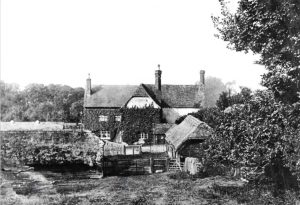
In 1652, he bought the Manor at Sewell from the Civil War Sequestrators. This land had been owned by Sir Lewis Dyve who was a Royalist (Cavalier) and when they lost the Civil War, the land taken away from him by Oliver Cromwell in 1650. Henry probably never lived at Sewell, but looked upon it as an investment. His brother Joseph, however, may well have moved in to look after Henry’s interests.

In 1669 Henry bought the Manor at Houghton Regis and other land from John Edgerton, 2nd Earl of Bridgewater. This new land included the Manor House (situated on the North side of the Green behind Park Cottage, Drury Lane) together with All Saints church and land at Thorn. The Manor House was demolished in 1700 by the Duke of Bedford.
Henry was appointed High Sheriff of Bedfordshire in 1671. He died in March 1672 when he was 63 years old.
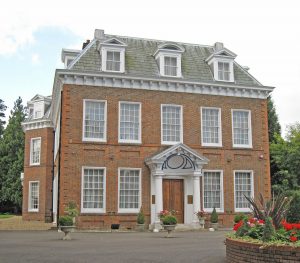
Henry’s daughter Alice, moved into the family home in Houghton Regis and bought a lot more land in the area costing in total about £7,750 (worth about £1,600,000 in 2019). She married William Milard in 1692. In 1695 he was appointed High Sheriff of Bedfordshire and shortly after receiving this honour, William was knighted and so Alice became a Dame. Alice bought the farm on the South side of the Green and, with William, designed and built a new mansion house, Houghton Hall, which was completed in 1700. Houghton Hall, was possibly designed and built in the new, very fashionable Dutch hipped style that was so typical of wealthy landowners of the late 17th century.
We don’t know how much the Hall cost but it still stands today, over 300 years later, and is now a Grade II listed building.
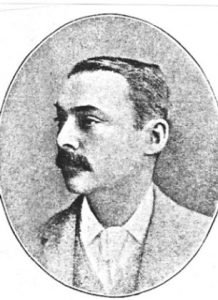 Henry Chernocke Gibbs Brandreth, was the last of the family to live in Houghton Regis. When he died in1908, the Houghton Hall estates were gradually sold off. These had covered most of Houghton Regis stretching from Blows Downs to Lords Hill and across to Dunstable. Most of the former Brandreth estates are now built upon, but the family is remembered in the names given to the roads in Dunstable, Humphreys Road, Brandreth Road, Brandreth Avenue, Duncombe Drive.
Henry Chernocke Gibbs Brandreth, was the last of the family to live in Houghton Regis. When he died in1908, the Houghton Hall estates were gradually sold off. These had covered most of Houghton Regis stretching from Blows Downs to Lords Hill and across to Dunstable. Most of the former Brandreth estates are now built upon, but the family is remembered in the names given to the roads in Dunstable, Humphreys Road, Brandreth Road, Brandreth Avenue, Duncombe Drive.
The Houghton Regis Brandreth family has now completely disappeared but they left behind a fascinating story and a beautiful house. In 1974 the memories were re-enforced by naming Brandreth Middle School after them. Sadly this name has now gone. The school merged with Linmear Middle school and was renamed Kings Houghton Middle School in 1990. Subsequently Kings Houghton became the Houghton Regis Academy, which closed in 2021.
Houghton Hall was sold to Lt Col Dealtry Part in 1913 and the Hall is now used as commercial offices.
At the same time much of the Brandreth Estate was sold. In October 1913 there was an Auction of the contents of Houghton Hall.
The Catalogue from the sale can be viewed on the Heritage Society Archive website
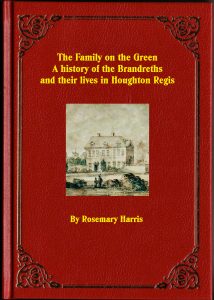
In 2022, the Heritage Society published a book titled “The Family on the Green”.
It is a history of the Houghton Regis Brandreths written by Rosemary Harris. The book is available by by sending a email to: info@hrhs.org.uk
Click here to view the Family Tree of the Brandreth Family in Houghton Regis
Houghton Hall Park
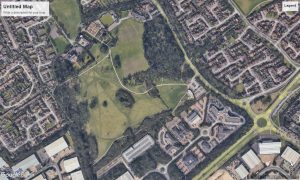 The Brandreths followed national changes in landscape fashion. 17th century gardens were enclosed around the house and largely formal. In the 18th Century, there was an ever increasing trend towards agricultural improvement and the enjoyment of nature. The genius of Lancelot ‘Capability’ Brown (1716-1783) was to combine these two influences into a unified approach to design that was both an economically productive unit, and aesthetically pleasing landscape. This became known as English Landscape Park.
The Brandreths followed national changes in landscape fashion. 17th century gardens were enclosed around the house and largely formal. In the 18th Century, there was an ever increasing trend towards agricultural improvement and the enjoyment of nature. The genius of Lancelot ‘Capability’ Brown (1716-1783) was to combine these two influences into a unified approach to design that was both an economically productive unit, and aesthetically pleasing landscape. This became known as English Landscape Park.
Although in miniature, the Brandreth’s park contained most of the essential features characteristics of a parkland, the exception was a waterbody (accumulation of water), which the landform (flat) did not favour.
The two central clumps may have framed Blows Downs in the Chilterns (still visible) and feature from the Hall. When South Wood was planted later (1900-04) it probably obscured these views but its central avenue was aligned on the Hall.
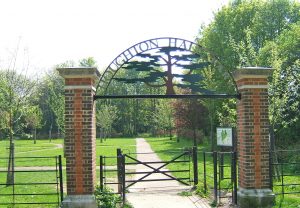 By the early 19th Century the parkland had been modified, with Humphrey Repton (1752-1818) now it’s main proponent, with a terrace next to the house rather than parkland. Repton also moved kitchen gardens closer to the main house than Brown had done, for convenience. Houghton Hall demonstrates these developments.
By the early 19th Century the parkland had been modified, with Humphrey Repton (1752-1818) now it’s main proponent, with a terrace next to the house rather than parkland. Repton also moved kitchen gardens closer to the main house than Brown had done, for convenience. Houghton Hall demonstrates these developments.
The parkland was created from the late 18th Century to 1848; there is a rectangle terrace between the hall and the ha-ha (a recessed landscape design element). The kitchen garden is only on the other side of the stables.
The park has none of the gardenesque additions associated with the Victorian period, such as exotic plant species, and features such as rockeries; these would have been in the now private areas around the Hall not the parkland. The parkland has a relatively simple collection reflecting the planting of the 18th and early 19th Century and their limited palette. It comprises mainly native forest species, with the exception of pre-Vicotrian introductions, the Lebanese Cedar (1645) – now a feature above the entrance gate to the Park, Corsican Pine (1759), and Irish Yew (1780). (Watkins and Wright).
The gardens were further modified in the early 20th Century with the extention to the terrace and cedar lawn, the Formal gardens, it seems likely that this was carried out by Colonel Part and his family. In their turn, they reflected the fashions of the Edwardian period, with hedged enclosures or garden rooms; a robust structure design, filled with generous herbaceous and shrub borders now typified by Dissinghurst and Hidcote. In summary, although relatively small, the landscape of Houghton Hall reflects the changing fashions of garden design from the 17th to the early 20th Centuries, particularly the English parkland style, and the success of its gentry owners in keeping up with the latest styles.
Extract from the Houghton Hall Park Website:
“Located in the heart of Houghton Regis in Bedfordshire, Houghton Hall Park is a hidden gem – unlocking 42 acres of parkland, woodland and so much more to visitors and the local community while retaining its valuable history.
The park is now jointly managed by Central Bedfordshire Council and Houghton Regis Town Council. Central Bedfordshire Council was awarded a grant of £2.2 million to transform the park as part of the ‘Renaissance and Renewal Project’ from Heritage and Big Lottery Funds ‘Parks for People’ grant scheme. The completion of this transformation was in October 2017 when the new visitor centre was open to the public. This project has provided an opportunity for the park and its heritage to be protected while delivering multiple community benefits, making Houghton Regis a better place to live, work and visit.”
Ref/ Houghton Regis Heritage Society / A1 / 2014 (c)
The Red House
The Red House on the Green is the oldest brick building in the Town.
During 2024 the Society will working with the Houghton Regis Town Council to ensure Community use of the Red House. We have prepared a leaflet with some proposals for the future use
Proposals for Use of the Red House
THE WHITEHEAD FAMILY AND THE RED HOUSE
The Whitehead family had a house on the green called “Strangers” known today as The Red House. Thomas Whitehead claims in his Will to have been born there, but no baptismal entry can be traced for him. He is probably the Thomas who studied for Matric at Magdelene College, 1635, and studied for his degree between 1638 and 1639.
A ‘relative’ (probably his father) had been headmaster at Repton School, Derbyshire, where Thomas became First Usher (senior master) from 1642 until he died in 1654. At the age of 43, Thomas became seriously ill. He returned to Houghton Regis, but by the time he made his Will, he was so weak he could only scratch his mark; however, he was perfectly clear in his mind as to what to do with the family property.
‘Strangers’, the house which Thomas Whitehead had inherited, faced the village Green; it had various outbuildings and ¼ acre of land. He instructed that either it should be converted into a school or be pulled down and the materials used to build a new specially designed school. The first two schoolmasters were local vicars who did not need a school house and it is likely that the first group of boys were taught in the church while a new building was being erected. Later documents describe a school house and classroom which suggests that the premises were purpose built.
In addition to the house and garden, Thomas Whitehead left the large sum of £250, and when the expenses of setting up the school were complete, the remainder was invested in 15 acres in England’s Field (the ‘inlands’ behind Station Road) in Dunstable.
In his Will Thomas Whitehead stipulated that the school would be made up of 15 boys from poor families in Houghton and five boys from poor families in the hamlets (probably Thorn, Calcott and Sewell). The Red House was not pulled down. In 1654, Thomas Whitehead, a native of Houghton Regis, founded one of the earliest schools in England – an elementary school to educate, free of charge, twenty poor boys of the village. It had to compete with the ‘plait schools’ where children from as young as 4 years of age, were paid for the plaiting of straw.
Central Bedfordshire Council has renovated the Red House and details of this can be found by clicking the link below:
The Red House Renovation
Our Constitution
Charitable Incorporated Organisation Registered in England Number 1174720
Download the Houghton Regis Heritage Society Constitution today
Charity Annual Report and Accounts
Our Annual Report and Accounts
Contact Houghton Regis Heritage Society
Chair David Hill
To contact us please type in your Name, Email, and your Message, then Submit.
You can also post a letter using the address below.
Houghton Regis Heritage Society
C/O Houghton Regis Town Council Offices
Peel Street
Houghton Regis
Bedfordshire LU5 5EY
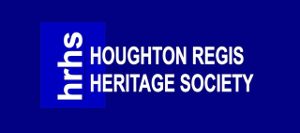


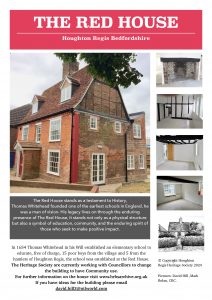

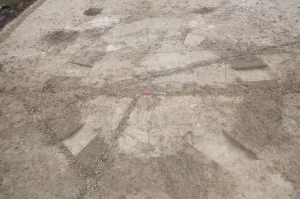
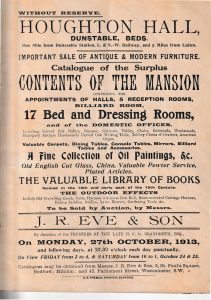
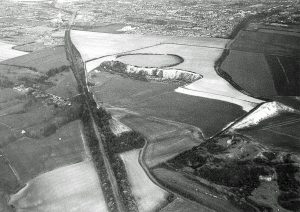
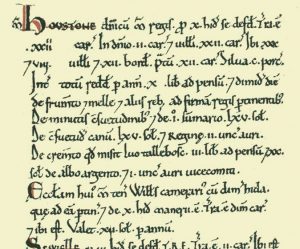
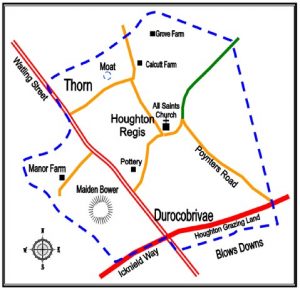 Houstone, Houghton
Houstone, Houghton